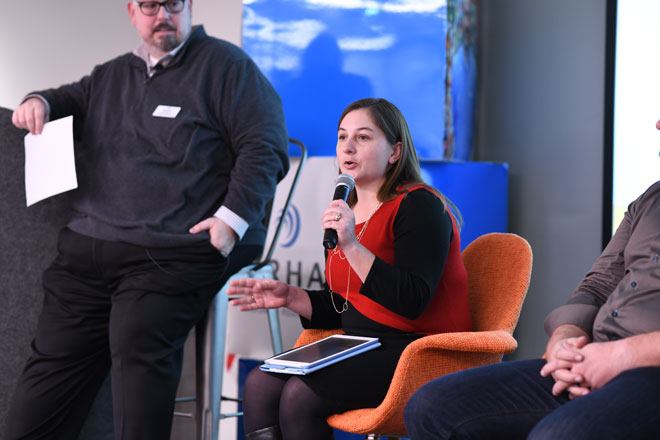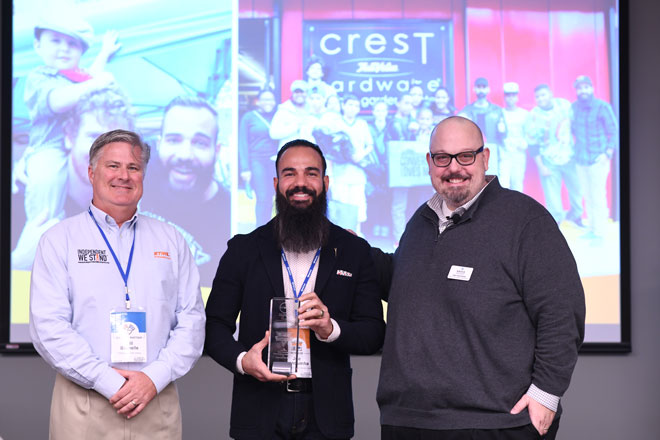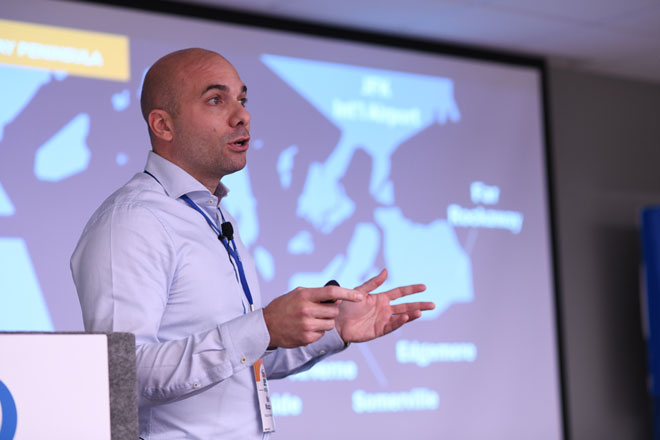In a retail world where customers are increasingly diverse and technology is changing by the second, adaptation is key.
Change was the dominant theme of the North American Retail Hardware Association (NRHA) State of Independents Conference, which brought together innovative retailers from throughout the U.S. to offer insight into how their independent home improvement businesses are evolving.
The conference provided an opportunity for retailers and other industry stakeholders to share ideas and discuss recent research on significant changes in the industry, such as evolving technology and increasing customer diversity.
Retailers and industry analysts served as keynote speakers, and several store owners also participated in panel discussions on challenges, growth opportunities and changes they are seeing.
Read on to see some of the new NRHA data on demographic and technology trends, as well as highlights from the retailer presentations.
2020 Vision
The State of Independents Conference allowed retailers from a variety of wholesale affiliations to network with each other and dialogue about the ways they are modifying their businesses to meet consumer expectations. Industry experts and representatives from distributors and manufacturers joined in the conversations with keynote speakers and retailer panelists.
Dan Tratensek, executive vice president of NRHA, presented research about customers’ ethnic and age diversity and their evolving use of technology. About 80 percent of retailers who responded to an NRHA survey say they are seeing demographic shifts in the customers they serve, and more than half are seeing greater ethnic diversity and increases in shoppers who are age 35 or younger.
Industry evolution, such as the ongoing growth of online retail, is not destroying the brick-and-mortar retail businesses that are in tune with their customers and continuing to meet their needs, Tratensek says.
In fact, more than 70 percent of industry retailers who participated in the NRHA research expect sales growth for the next three years. And 73 percent say emerging technology, such as new employee-facing and customer mobile apps, are impacting their businesses.
“As you think about ways you want to change in 2020, you have to pay attention to what your customers want,” Tratensek says. “Understand and be committed to what your customers want.”
Serving a Multicultural Market
Addressing ethnic diversity in hiring and customer service, Matthew Mazzone, owner of three Mazzone Ace Hardware stores in Brooklyn and Queens, New York, spoke at the conference and told the story of how his family business has evolved with its neighborhood.
Mazzone’s family started the business in 1950 in an Italian neighborhood and served primarily Italian shoppers for decades. Mazzone grew up working at the family’s first hardware store, back when many business owners in the area were reluctant to serve customers from other cultures. “If you didn’t look like you belonged there, you were not treated well,” he says.
When Mazzone took over the business from his father in the 1990s, the neighborhood had grown increasingly diverse, and Mazzone wanted to ensure that his entire team respectfully met the needs of all shoppers.
Changes he led included hiring workers who reflected the gender and ethnic diversity of the area, implementing a formal onboarding process, training the staff on excellent customer service and ensuring his staff was respectful to all shoppers. Mazzone Ace also began hosting community events that welcomed the whole community.
In 2019, about 3,000 diverse people attended an October festival Mazzone’s business hosts annually outside the Mazzone Ace location in Brooklyn.
“It took a complete culture change in our operation,” Mazzone says.
Digging Into Data
Technology was a major focus at the NRHA State of Independents Conference.
Dawn Ernst, director of information technology for Buchheit, spoke about the company’s proprietary software called Snapshot during her presentation.
Buchheit is an independent, multifaceted business with eight rural home and farm stores in Missouri and Illinois. Its operations include a feed manufacturing operation and logistics company. The company has used technology to improve multiple aspects of business. Buchheit developed its own software for creating operational efficiencies, developing consistent employee training practices and evaluating performance indicators. Ernst was heavily involved in creating the software.
“We had a lot of redundant work going on,” Ernst says. “Nobody really understood why they did it. They just knew they were told to do it.”
The company needed an array of real-time information, including store-specific price change recommendations on products; streamlined employee training programs so everyone would be trained up to the same standards; a companywide digital communications platform; and data that was easy to interpret to improve worker productivity.
Buchheit chose to develop the program internally instead of outsourcing it or finding a ready-made solution because the company’s departments had been siloed, working too independently and too inconsistently, Ernst says.
Having Ernst and another Buchheit employee dig deeply into the data helped them understand the full business better, she says.
“Why did we build this all in house? We couldn’t afford not to,” Ernst says. “By building this system internally, we’ve really been able to wrap our arms around so many things.”
How Retailers Say the Industry Is Changing
80% Have seen a demographic shift in their immediate customer base.
54% Say they see a more ethnically diverse group of shoppers in their stores.
51% Say they see more younger shoppers (age 20-35) in their stores than before.
73% Say emerging technology trends are affecting their businesses.
According to respondents to the NRHA 2019 State of Independents Conference research
Trying Tech Solutions
In addition, two retailers presented at the conference about technology innovations they have implemented. Matt Woods, owner of Woods Hardware in Cincinnati, and Eric Hassett, owner and president of Hassett Hardware in the San Francisco Bay Area, both use technology to improve employee efficiency and customers’ shopping experiences.
Woods provides 3D virtual reality store tours through his operation’s website as an e-commerce tool.
“It allows customers to scroll through our stores when we’re not even open,” Woods says.
He also uses technology to make sure his company’s online information is correct and store name searches bring up his business. Other technology allows him to optimize delivery routes.
Some of the technologies Hassett has experimented with have improved employee productivity at his businesss. For example, he uses a conversion metrics tool to track the relationship between employee engagement with customers and conversion rate.
Hassett Hardware also uses platforms such as Yelp to promote the business and promptly address good and bad customer reviews.
Further, the company uses mobile apps for a variety of tasks. The apps are useful for texting information to customers and accessing digital forms, checklists and time clocks.
“We’ve been using devices to speed up everything,” Hassett says.
To see more from the conference, watch some highlights at TheRedT.com/soic-video.
 Hardware Retailing The Industry's Source for Insights and Information
Hardware Retailing The Industry's Source for Insights and Information












